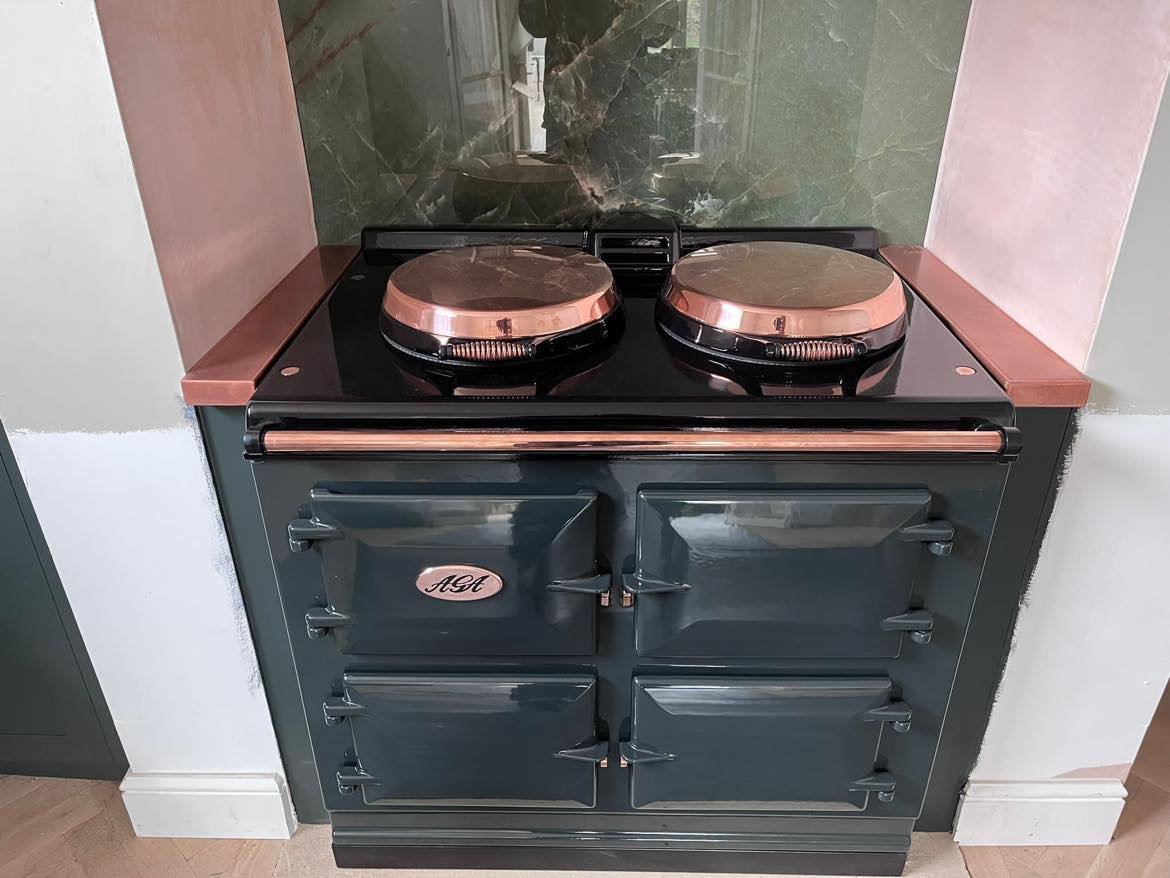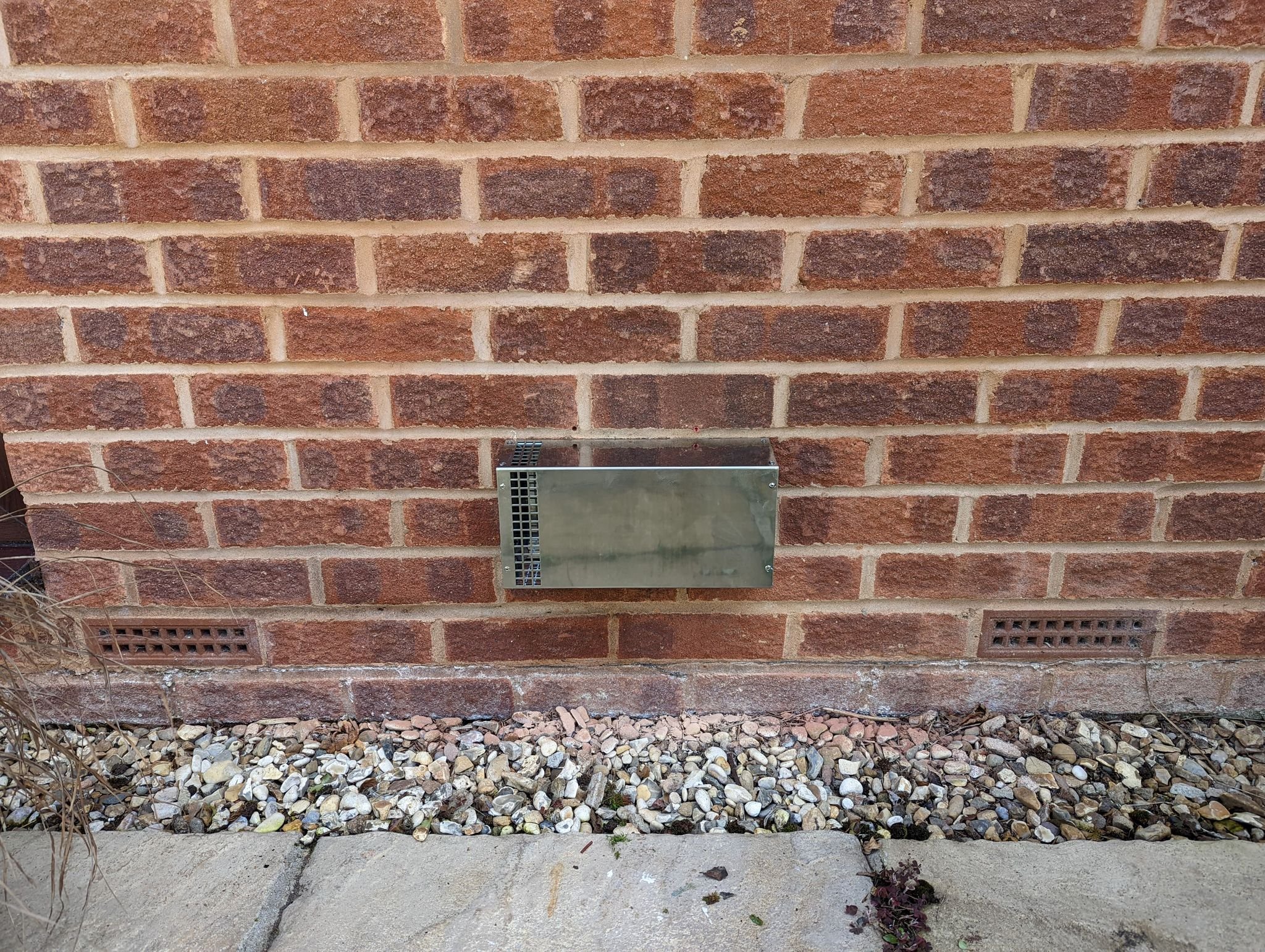Venting Options
Firstly, why does an electric Aga need venting?
A traditionally fueled Aga is vented to remove products of combustion, cooking smells and moisture. An electric Aga no longer produces products of combustion but we still need to remove cooking smells and moisture from the ovens.
There are 4 ways of venting an Electrickit Aga: into an existing chimney, straight out the back through an outside wall, on an extended run with fan or room venting. Some companies offer only room venting - it is simple to install & doesn’t add any cost. For us, it should be used only when all other options have been exhausted.
Here are the factors we take into account when considering venting:
1. Venting into an existing chimney: If your Aga is currently venting effectively into the chimney, it should continue to do so once converted. Unless you wish to remove the visual flue pipe for any reason, there is very little point in changing it. You will need a flue support bracket once converted (due to the removal of the flue manifold & oven manifold during conversion), which is a small extra cost.
2. Straight out the back venting: If your Aga is situated on an outside wall, it can be successfully vented through a 28mm copper pipe from the back of the Aga, through the wall and terminating in a T piece. We drill through on conversion day and fit the vent so there is no need to bring in other trades at additional expense. We can drill through almost any wall - we come well equipped! There is no additional cost for this venting system.
3. Extended vent with fan. If the Aga is on an internal wall, we can run 28mm copper pipe to the outside wall. Electrickit/eControl does not vent well when bends or significant lengths are introduced. This system therefore requires a fan, located externally and installed by us on conversion day. An additional button is fitted on the control panel, no additional power is required as the fan is powered from the Aga itself and the fan is switched on only when required. Vent fans are unfortunately a costly part so this does add around £500 to the price of conversion. Agas do vent brilliantly with these fans so it is well worth the investment.
4. Room venting. If there is no viable or aesthetically pleasing way of running an extended vent and all other options have been exhausted, we can room vent the Aga. Room vented Electrickit Agas have a shroud on the top plate, through which cooking smells and moisture enter the room. There is no additional cost for room venting.
Why do we recommend avoiding this option where possible? A traditional Aga has a hot flue or fan which pulls moisture from the oven. With room venting there is nothing to create draw. Therefore, when you room vent, you are hoping that by the physics of steam rising, moisture will make its way out of the ovens and through the vent. In practice, this just doesn’t work all that well. Many users struggle to crisp food in their room vented Agas, resulting in soggy roast potatoes or crackling for example. In addition, moisture can pool in the ovens, in particular the bottom oven. This can then run out of the oven and down the front plate.
An exception: 3 oven Agas located on external walls benefit from the addition of a fan. Due to the internal venting path on 3 ovens, removing moisture from the 3rd oven can be more problematic. A fan will enable the 3rd oven to vent far more successfully.
Things to remember:
Your Aga will vent better the longer it has been on. Hot saturated cast will create better draw. With this in mind, turn your Aga on a little earlier on big cooking days or when quality of results is key!
Turning your Aga off immediately after cooking may cause rust build up. Leave the ovens (& if present, the fan) on for 10 minutes after food is removed to ensure all moisture has left the ovens before turning off.



